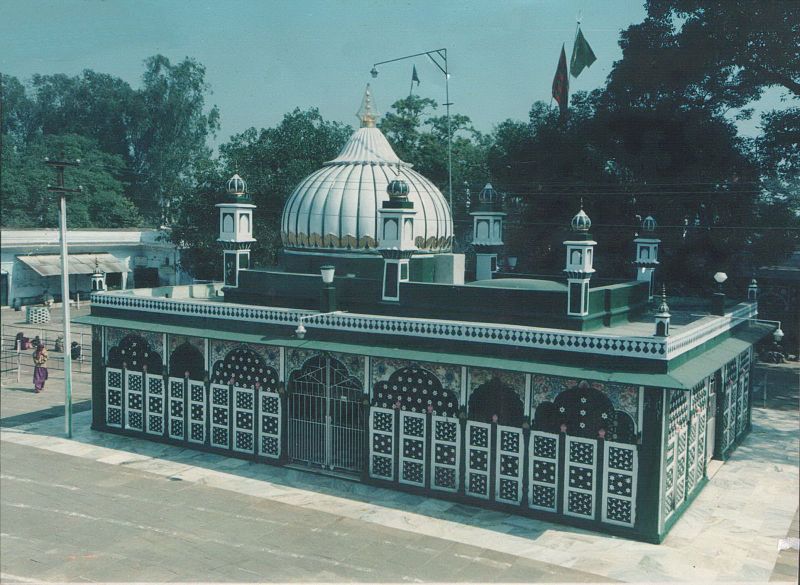How to visit a religious shrine in India if you are a Pakistani
Any exchange between Pakistan and India (from cricket teams to onions) is fraught with the border separating the two countries being only the first of hurdles. But if you want to visit the shrine of a religious personality you revere in India, we have good news. There is an official and relatively stable mechanism in place.
Pakistan and India signed a protocol on visits to religious shrines in 1974 to allow pilgrims (or zaireen) to move easily between the two countries. Although there are hiccups, the process is fairly stable and exchanges happen regularly.
Every year, Pakistan issues visas to and facilitates Hindu and Sikh zaireen to visit shrines across Pakistan from Shadani Darbar Hayat Pitafi in Ghotki to the Gurdwara Panja Sahib in Hassan Abdal. In return, India offers Pakistani zaireen the facilitation to visit six shrines in India.
India does not offer individual tourist visas to Pakistani passport holders because of our general relations. So visits to shrines in India take place in groups defined by a quota and on specific dates.
In 2020 and 2021, India refused to give visas to Pakistani pilgrims due to Covid restrictions. Pakistan allowed India-based pilgrims, however, to come over, with some conditions and safety protocols. Sometimes the visits need to be called off due to more political reasons.
“Last year (2022) one of the visits had to be cancelled because India issued visas to the zaireen but not to the officials who were to accompany them,” said Umar Butt, focal person for media from the Ministry of Religious Affairs in Pakistan. “As a result we had no choice but to call off the visit, because we cannot send the zaireen without officials.”
The quota for each of the six sites is different, depending on the size of the gathering that takes place and the number of people who apply for permission from Pakistan. The smallest quota is 150, the largest is 500. The visits only take place on the urs or death anniversary of the revered personalities.
The process
The whole process is managed by Ministry of Religious Affairs and Interfaith Harmony and is roughly the same for all six sites.
In the first step, the ministry invites applications six months before the urs. The applications are announced in a press release that you might see on a news website or in a newspaper, but it might be safer to keep an eye on the ministry’s website.
Applications are submitted by a form on the ministry’s website. The ministry will also charge a non-refundable fee of Rs1,000. You will be asked to submit basic biographical data as well as details of any previous visit to an urs in India.
Even if you have visited a shrine in India, you will not be disqualified automatically. If the number of applications exceed the quota for a particular shrine, candidates are selected by a balloting process one month after the applications are submitted.
Upon completion of the balloting, the ministry will announce the names of a particular year’s zaireen on the website’s portal where you will be able to track it using your CNIC number.
If selected, you will be asked to submit a visa application online yourself, but you will also be asked to submit your passport to the ministry who will handle the rest of the process including receiving your passport from the Indian High Commission when your visa finally arrives.
The costs to be paid for the visit differs from shrine to shrine based on factors such as how far it is and whether the shrine has accommodation for zaireen or whether a private hotel will be needed. The cost also naturally vary from year to year based on inflation and exchange rates. A visit in 2023, to a shrine such as Amir Khusrau’s where hotel rooms will have been rented, will be somewhere around Rs35,000.
The journey to India is made by train in most cases and all departures take place from Wagah border in Lahore. In exceptional cases, zaireen will also travel by bus. Trips have been called off at the last minute due to non-issuance of visas and other issues.
But such problems, according to Umar Butt, are rare and trains are mostly safe and reliable as well. If the trip does end being called off at the last minute, the amount you paid for the expenses of the trip will be refunded.
The shrines and their quotas
Here is a list of the shrines you can visit and the number of visitors that the India and Pakistan governments have agreed to accommodate. We’ve also mentioned the dates of the urs (in hijri calendars), but remember that applications open six months before the actual event.
Khawaja Moin-ud-Din Chishti

The shrine located in Ajmer Sharif, in Rajasthan, has the largest quota with 500 zaireen, but it also receives almost 5,000 applications. The urs is held on 6 Rajab.
Nizamuddin Aulia
The shrine located in West Delhi, has the second largest quota with 250 zaireen. The urs is observed on 18 Rabi ul Sani.
Amir Khusro

This shrine is located right next to Nizamuddin Dargah in Delhi. Pakistan can send a maximum of 200 pilgrims here to the urs held on 17 Shawal.
Ahmed Sirhindi Mujaddid Alf Sani

The shrine, also referred to as Sirhind Sharif, has a quota of 200 zaireen from Pakistan. The urs is observed on 28 Safar.
Allaudin Sabir

The shrine, also referred to as Kalyar shareef, is located in Uttarakhand and has a quota of 150 zaireen. The urs is observed on 13 Rabi ul Awal.
Hafiz Abdullah Shah

The shrine is located in Agra and has a quota of 150 zaireen from Pakistan. The urs is observed on 15 Rabi us Sani.
For the latest news, follow us on Twitter @Aaj_Urdu. We are also on Facebook, Instagram and YouTube.





















Comments are closed on this story.